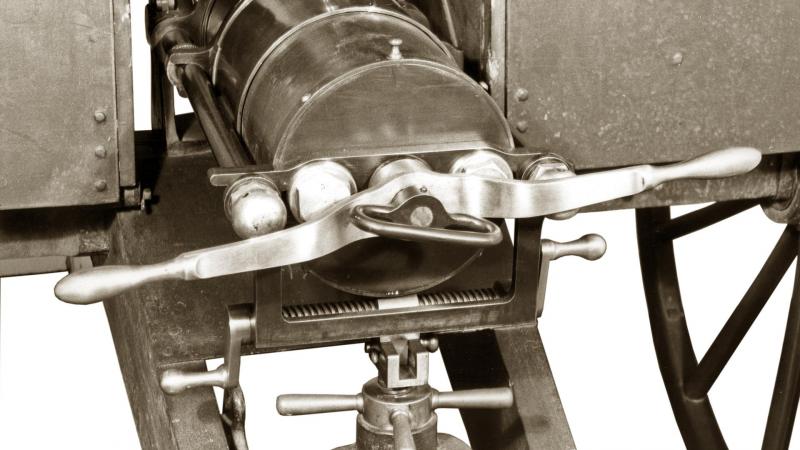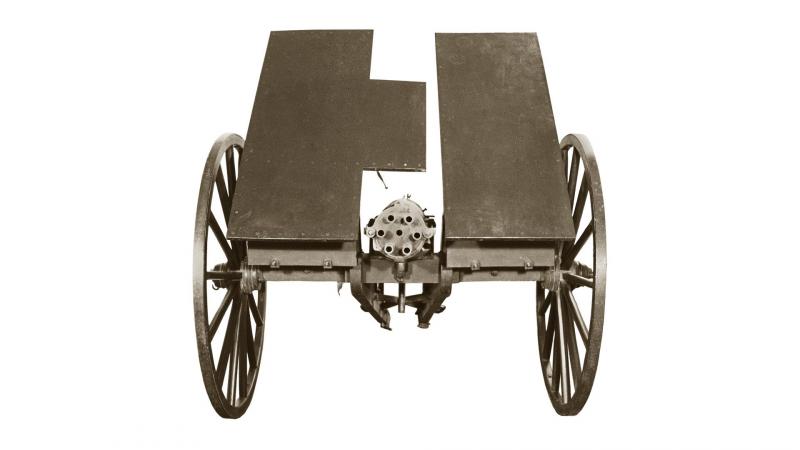6-barrel mechanical machine gun, Claxton system
Purchased in 1887
Long before the 1883 invention of the automatic machine gun, the ancestor of current machine guns, by Hiram Maxim, several systems were designed, from the 15th century onwards, to practice drills using heavy weapons with one or more barrels.
Invented by the American Colonel F.S. Claxton, this example was produced as part of a small run, notably by the Liège engineer Désiré Lachaussée. It is a mechanical machine gun (that is, it needs to be operated manually) with continuous fire (firing the cartridges one after another and not simultaneously using several barrels). In fact, in this case, the rounds are placed in a shaft (missing here) by a servant and are fed into the chamber of the two central barrels, which are diametrically opposed. The pointer manoeuvres the lever located at the rear of the cylinder head up and down, causing the alternative firing of these two barrels. When these overheat after a series of shots, they are replaced by two others via a manual rotation movement; the same then occurs with the latter two and so on, with each tube supposed to be able to fire 40 shots. Beyond that, the six barrels must be replaced with a spare set while waiting to use them again after cooling and cleaning. The firing rate is around 80 shots per minute; the maximum range is 2,200 metres.
The gun is equipped with a wooden gun carriage with two iron wheels and has a device that allows a third wheel to be placed for transport purposes. Each of the two ammunition chests serves as a support for a folding wooden shield, which is covered with an iron sheet.
In the 18th century, the members of the Lachaussée family, passing from father to son, were locksmiths at Saint-Lambert cathedral in Liège, then engineers in the 19th and 20th centuries and producers of artillery equipment and ammunition, among other things. Some of this company’s activities are currently continued by new owners, under the company name “New Lachaussée S.A.".

